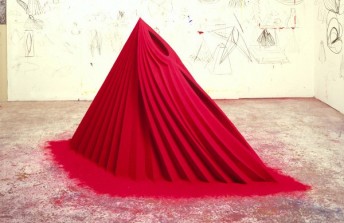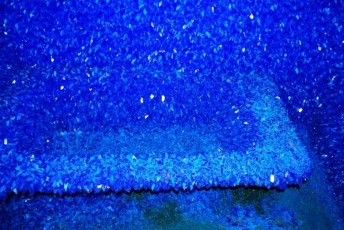The Science of Color and The Way it Captivated Artists
Jul 20, 2018
To get an idea of just exactly how complex the science of color is, take a moment after reading this article to visit the Cooper Hewitt collection website. At the top of the page you will see an option to “explore the collection.” Click there and you will see that in addition to letting you search its collection the way almost everyone always does—by the name of a particular designer or artist, or by a particular time period or aesthetic trend—the museum also lets you search for works according to color. Cooper Hewitt added this search parameter in conjunction with its current exhibition, “Saturated: The Allure and Science of Color.” The exhibition, which occupies its second floor galleries, includes nearly 200 objects borrowed from the permanent collections of both Cooper Hewitt and the Smithsonian Libraries. It unfolds across seven sections: Capturing Color, Color Optics, Creating Colors, Navigating Color, Color and Form, Color Collaboration and Consumer Choice. Through this literally eye-popping selection of rare books and manuscripts, posters, prints, textiles, ceramics, design objects, and interactive displays, visitors are guided down a rabbit hole of thought, at the bottom of which more questions are raised about color than answered. Despite analyzing color from seemingly every possible angle, “Saturated” ended up reminding me that the science of color is really less a science than an art, with a lot of mystery, magic, and guesswork thrown in for fun.
Seeing is Believing
“Saturated” opens with a section titled “Capturing Color.” It begins by offering a glimpse at the work of Sir Isaac Newton, who, in the early 1700s, experimented with prisms to try to understand the properties of color in relation to light. His observations are empirical and precise. They inspire the notion that color is indeed a measurable, predictable phenomenon, like gravity or heat. But no sooner do we start thinking of color in purely scientific terms than the exhibition introduces us to the work of Johann Wolfgang von Goethe, who contradicted the discoveries of Newton. Goethe was more of a poet than a scientist, so he was interested less in proving what color is, and more in contemplating how it tricks us into thinking it is something that it is not. He wrote about the effects of shadows on colors, and the tricks played by refraction. Starting this exhibition with this contradiction reminds viewers right off the bat that color is subjective: that some of us do not see anything; that even those of us who can see do not necessarily see color; and that even those of us that do see color do not always see the same color.
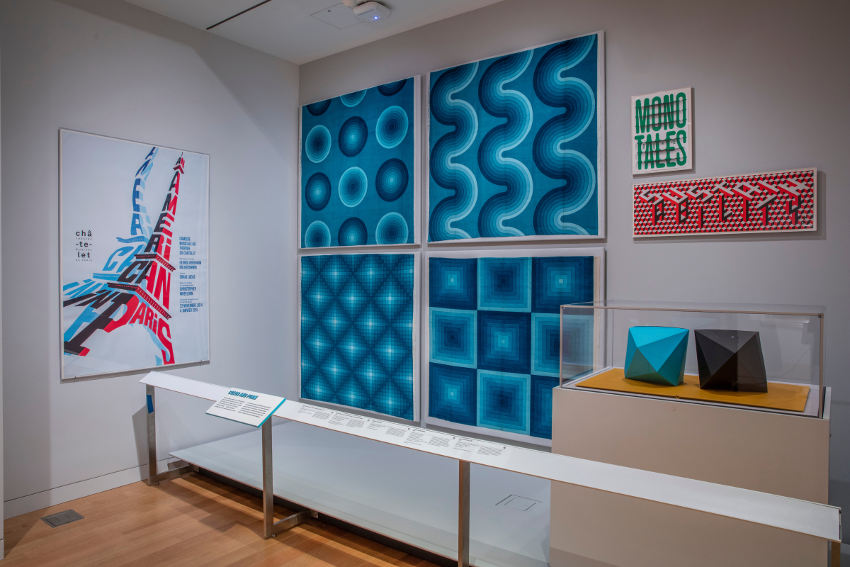
Saturated: The Allure and Science of Color, installation view at Cooper Hewitt. Photo: Matt Flynn © Smithsonian Institution
As far as I know I perceive color in a typical way, meaning I do not taste it, or smell it—I perceive it with my vision. Though I know I am not color blind, I have no idea whether or not I am capable of perceiving the full range of perceptible colors. How would I know? We cannot know what we do not know. Regardless, even assuming I am capable of perceiving every color that is theoretically perceptible by human eyes, this brief introduction to the thoughts of Newton and Goethe tell me that even if we can see color and describe it, we do not yet understand what color is. We are ignorant about what, if anything, color means, or why it matters whether we can perceive it or not. And that fundamental concept continues through several other sections of this exhibition as well. The “Color Optics” section looks at iridescence, the illusion that certain surfaces, like bubbles, are constantly shifting colors. It then examines the optically challenging works of Modernist artists like Josef Albers, that make us question whether two neighboring colors create an additional color on the border where they come together.
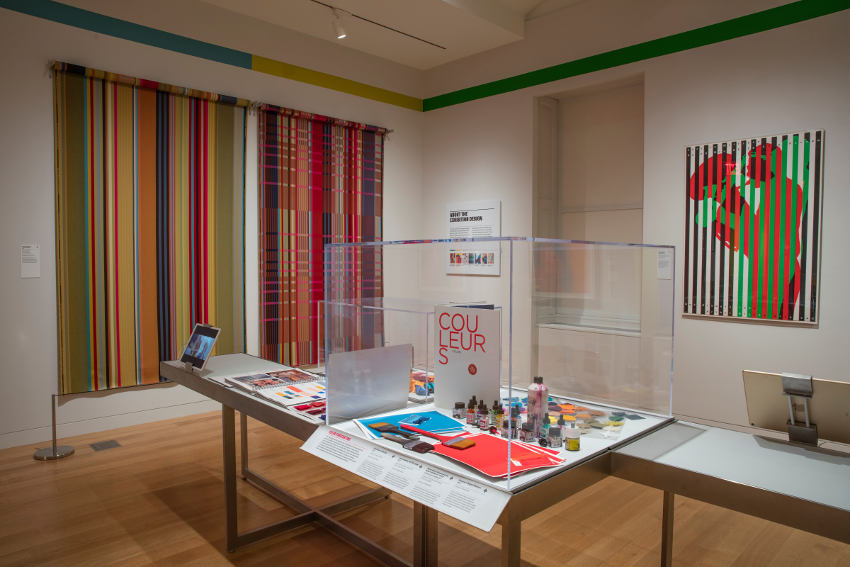
Saturated: The Allure and Science of Color, installation view at Cooper Hewitt. Photo: Matt Flynn © Smithsonian Institution
There is No Thistle Here
The questions raised by “Saturated” made me wonder if, as a species, we are simply color illiterate. Especially the later sections, like “Color and Form” and Consumer Choice,” examine not so much what we know or do not know about color, but rather how artists and designers have managed to put color to use despite the fact that we know so little about it. We see examples of practical applications of color in maps, and commercial applications of color in fashion and industrial product design. Questions are raised about what colors mean to us emotionally, psychologically, spiritually, and physically. But questions are also raises about how aware we are of how we can be manipulated by color, and made to think that it has objective meaning. All of this brings me back, in fact, to the online experience I mentioned at the start of this article.
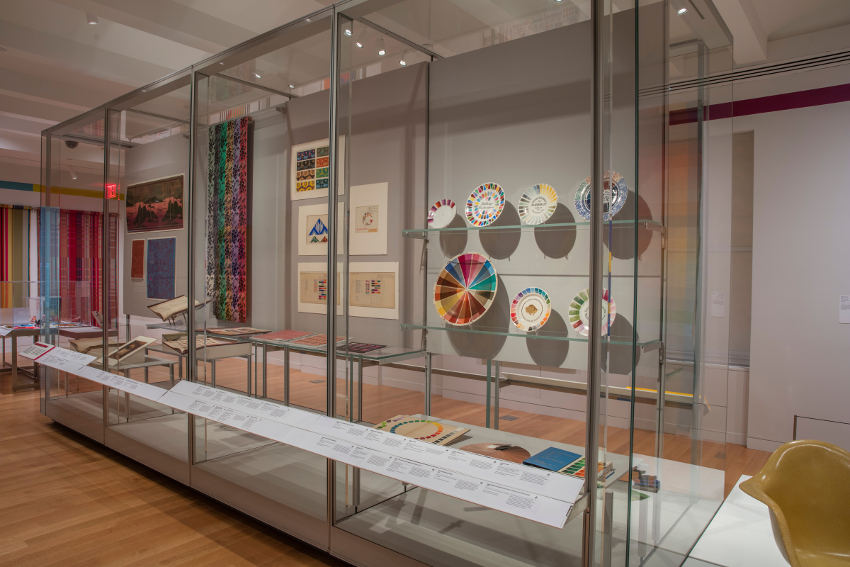
Saturated: The Allure and Science of Color, installation view at Cooper Hewitt. Photo: Matt Flynn © Smithsonian Institution
When I went to the Cooper Hewitt collection website, I searched for the color “thistle.” I was promptly shown pictures of hundreds of objects and images that, according to the digital eye that scanned the collection, are at least partially thistle-colored. And indeed, at first, each image I looked at did appear to include this particular hue. Yet, upon closer inspection, I realized that in many cases thistle was not actually there at all. It was a color mirage, an illusion caused by light shining off a piece of metal, or shadow falling on a white surface, or some other visual anomaly. Light had fooled my eye, and evidently also the eye of the computer, into perceiving color where there was none. This was not a glitch in the search program. This is precisely the point of “Saturated.” It is designed to make us wonder not only about what color is, but about what it is not. It is a perceptible phenomenon. It is not concrete. It is abstract. It only has meaning and importance if we perceive it to be so. “Saturated: The Allure and Science of Color” is on view at Cooper Hewitt through 13 January 2019.
Featured image: Saturated: The Allure and Science of Color, installation view at Cooper Hewitt. Photo: Matt Flynn © Smithsonian Institution
By Phillip Barcio

